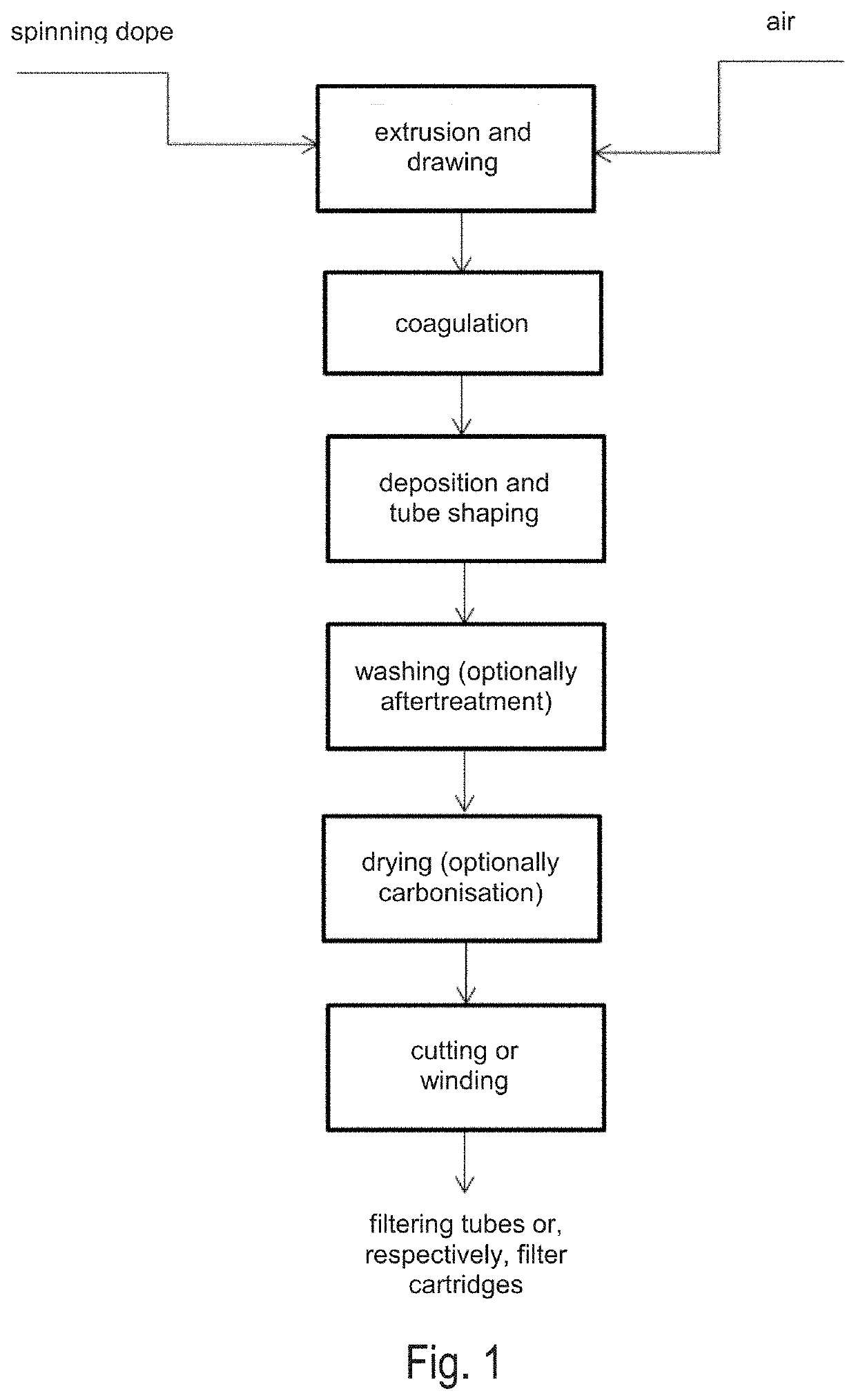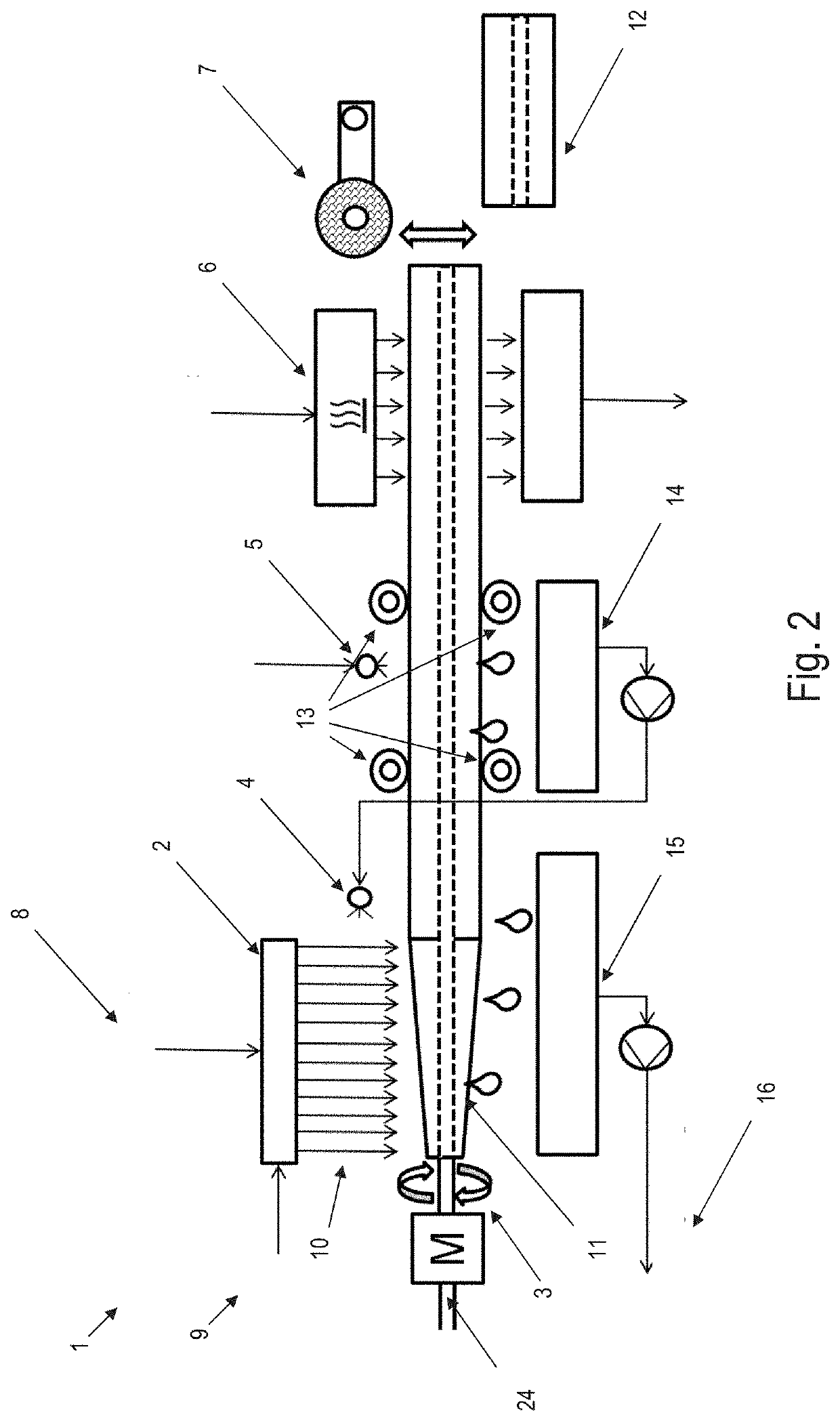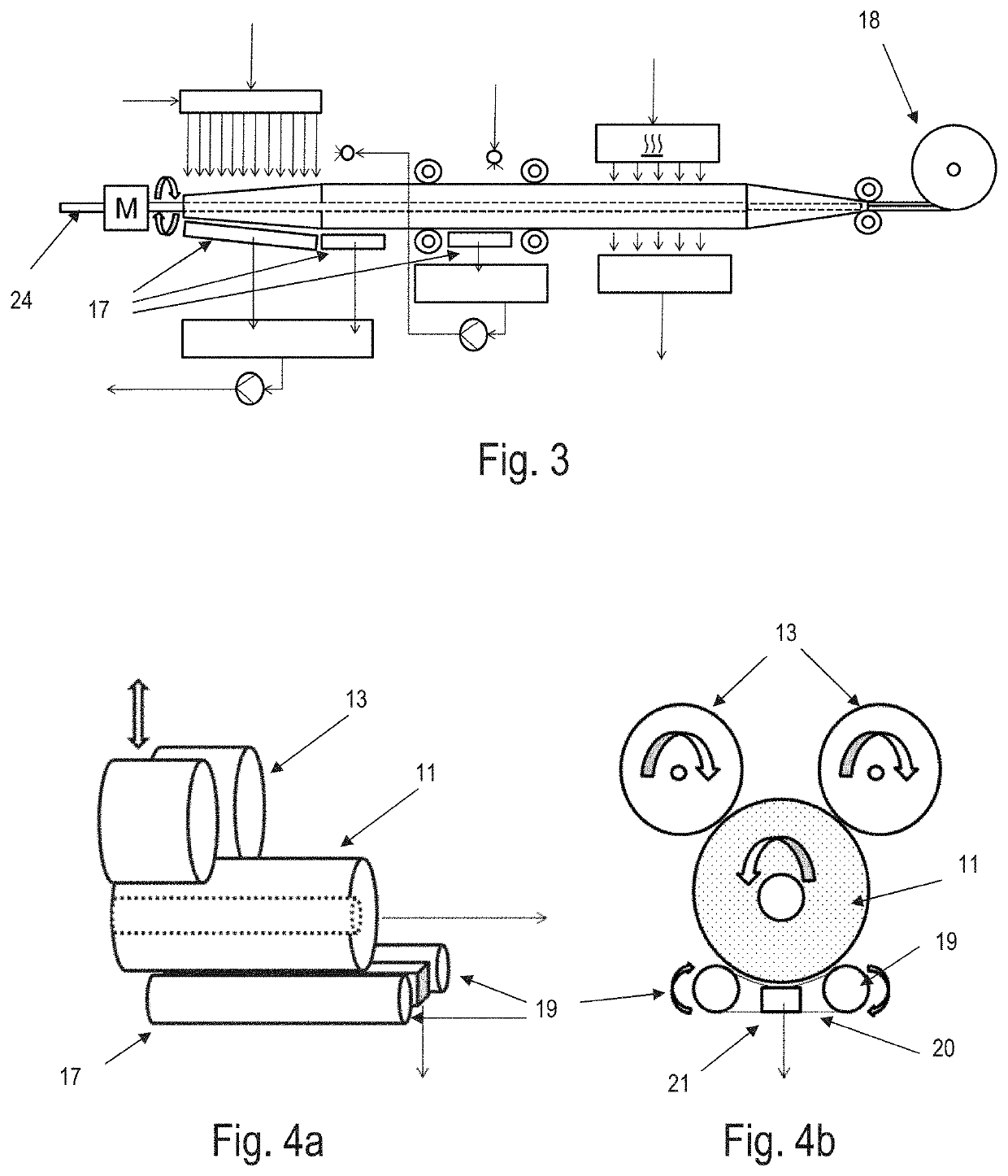Method and device for producing tubular cellulosic spun-bonded nonwoven fabrics
a tubular cellulosic and nonwoven technology, applied in the direction of vegetal fibres, filtration separation, separation processes, etc., can solve the problems of not being able to produce seamless filtering tubes and filter cartridges directly from cellulosic spinning dope and without binders
- Summary
- Abstract
- Description
- Claims
- Application Information
AI Technical Summary
Benefits of technology
Problems solved by technology
Method used
Image
Examples
Embodiment Construction
[0034]For a better illustration of the invention, the essential features are depicted in the following figures, based on preferred embodiments of the device according to the invention:
[0035]FIG. 1 shows a block diagram of the method according to the invention.
[0036]FIG. 2 schematically shows a device according to the invention for the production of filter cartridges in a side view.
[0037]FIG. 3 schematically shows a device according to the invention for the production of filtering tubes in a side view.
[0038]FIGS. 4a, 4b schematically show the rotating deposition section in a perspective illustration and in a front view.
[0039]FIG. 5 shows a device according to the invention in a side view, for the continuous production of a cellulosic spunbonded nonwoven tube without a winding core.
[0040]FIG. 6 shows a device according to the invention in a side view, for the continuous production of a cellulosic spunbonded nonwoven tube with a winding core.
[0041]FIG. 7 shows a device according to the...
PUM
| Property | Measurement | Unit |
|---|---|---|
| temperatures | aaaaa | aaaaa |
| diameters | aaaaa | aaaaa |
| temperatures | aaaaa | aaaaa |
Abstract
Description
Claims
Application Information
 Login to View More
Login to View More - R&D
- Intellectual Property
- Life Sciences
- Materials
- Tech Scout
- Unparalleled Data Quality
- Higher Quality Content
- 60% Fewer Hallucinations
Browse by: Latest US Patents, China's latest patents, Technical Efficacy Thesaurus, Application Domain, Technology Topic, Popular Technical Reports.
© 2025 PatSnap. All rights reserved.Legal|Privacy policy|Modern Slavery Act Transparency Statement|Sitemap|About US| Contact US: help@patsnap.com



